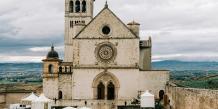From Fatima to Rome to Ephesus: A Pilgrimage of Miracles
St. Ignatius of Antioch was the first to refer to the struggling Christian movement as the Catholic Church - the ‘universal church’. The tours here follow the fulfillment of this idea through the evangelism and miracles of the Saints, to become the largest faith on earth.
Unlike our scheduled tours to Italy, these are ‘suggestions’ that can be modified to your group’s taste. They have been road-tested by countless groups over our 80 year history.
Pilgrimage tours are usually initiated by your local parish priest. But anyone with faith, friends and a little fortitude can form a group of 12 or more travelers. And the group leader can often travel at a deep discount, or for free!
Perillo’s Faith Group agents are all veterans and will work closely with you before, during and after your trip. The process usually goes accordingly:
- Choose from our itineraries or create your own.
- Decide on your departure date.
- Modify the itinerary, if desired.
- Pay as a group or individually.
- We’ll arrange your group air . . . and we’re off!
The tours are all fully-escorted by Catholic tour leaders and local expert guides. Breakfast and dinner is often served daily with a few ‘free nights’.We can also arrange for Mass to be said each morning in the hotel, or at a local church.
Sure, you can enjoy a beach vacation or a cruise. This is different. We are proposing a life-changing journey that you will never forget.
Peace,
Steve Perillo
CEO Perillo Tours
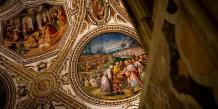
The Catholic Church Jubilee, occurring every 25 years, is a significant event in the Church's tradition. Pilgrims undertake journeys to designated holy sites, often in Rome, seeking grace and spiritual growth.
The concept traces its roots to the Biblical tradition of the Jubilee Year in Leviticus (Chapter 25). Through rituals, prayer, and charitable acts, the Catholic Church uses the Jubilee to foster spiritual and communal unity, reflecting its commitment to faith, mercy, and renewal.
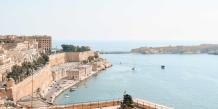
Following his last great missionary journey, Apostle Paul returns to Jerusalem and faces arrest. Transported to the Roman provincial capital of Caesarea, he undergoes trial and is eventually sent as a prisoner to Rome to appear before the emperor’s court.
The narrative in the Acts of the Apostles vividly recounts Paul's perilous voyage to Rome, including a shipwreck in Malta, supported by rich historical detail. This passage stands out in the New Testament, boasting a compelling evidential confirmation of its historical accuracy.
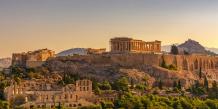
In Acts 16, prompted by a vision, Paul ventures to Macedonia. In Philippi, they convert Lydia, heal a tormented girl, and face imprisonment, leading to the conversion of their jailer. Acts 17 sees Paul preaching in Thessaloniki, encountering opposition, and seeking refuge in Berea. Trouble persists, and Paul is sent to Athens, where he delivers the renowned "Areopagus sermon." In Acts 18, after Corinthian work, Paul sails to Syria, stopping briefly in Ephesus. His encounters reveal the challenges and triumphs of spreading the Gospel.
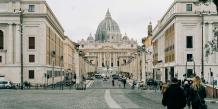
A transformative pilgrimage visiting Vatican City's spiritual treasures. Attend a papal audience! Discover Rome's sacred landmarks like St. Mary Major Basilica and catacombs before journeying south to Monte Cassino and San Giovanni Rotondo, the birthplace of St. Padre Pio.
Experience profound moments at Padre Pio's tomb and the Grotto of Michael the Archangel. Then, venture to Lanciano and Loreto, witnessing Eucharistic miracles and the Holy House of Nazareth. Conclude in Međjugorje, Bosnia and Herzegovina, embracing spiritual growth and Our Lady's presence atop Apparition Hill.
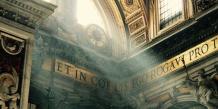
Padre Pio, born Francesco Forgione in 1887 in Pietrelcina, Italy, led an extraordinary life marked by mystical experiences and deep devotion to God.
Ordained as a Capuchin friar in 1910, he gained widespread recognition for bearing the stigmata— wounds resembling those of Christ. Despite controversy and scrutiny from church authorities, he was canonized a saint in 2002 by Pope John Paul II. His legacy endures through the global popularity of the Padre Pio devotion and the healing miracles attributed to him.
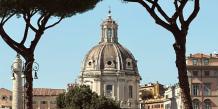
How did Italy become the home of the Catholic Church? If Christianity was to grow, it had to first conquer the world’s most dominant city – Rome! The deaths of Peter and Paul in Rome reinforced its significance. Peter is considered the first Pope. The Bishop of Rome, later known as the Pope, gradually asserted pre-eminence over other bishops, symbolizing Rome’s centralized authority.

St. John Paul II, original name Karol Józef Wojtyła (canonized April 27, 2014), was the bishop of Rome and head of the Roman Catholic Church from 1978 to 2005.
Maria Faustyna Kowalska, also known as Saint Maria Faustyna Kowalska of the Blessed Sacrament, was a Polish Roman Catholic nun and mystic. Her visions of Jesus Christ inspired the Roman Catholic devotion to the Divine Mercy and earned her the title of "Secretary of Divine Mercy.
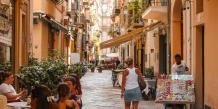
Peter baptized the Roman centurion Cornelius, traditionally considered the first Gentile convert to Christianity, in Acts 10. Based on this, the Antioch church was founded. It is also believed that it was there that the term Christian was coined. Christianity arrived on the Italian peninsula in the first century, probably by unknown travelers, traders or soldiers. The Letter to the Romans of Paul the Apostle is addressed and attests to the presence of Roman Christians in the first century. Christians in Rome were also in touch with St. Peter and St.

The Passion of Christ is a sacred play performed by the villagers of Sordevolo, Italy, every five years since 1816. The play is an open-air theater that puts on a dramatic presentation of Christ's suffering, death, and trial. The play features actors, extras, musicians, and stage operators, and takes place from June to September, with 400 people participating three nights a week.
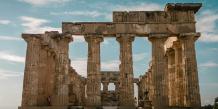
Embarking on a pilgrimage through the ancient lands of Turkey and Greece is not merely a travel itinerary; it is a transformative spiritual journey that resonates deeply with Christians. These regions, steeped in biblical history, offer a unique opportunity to trace the footsteps of the Apostle Paul and explore the seven churches of Revelation. We finish with 4-days in Rome, the majestic seat of the Catholic Church.
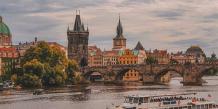
This pilgrimage offers a profound Catholic journey through Poland and the Czech Republic. Highlights include visits to Kraków's spiritual landmarks, such as Wawel Cathedral and the International Shrine of Spirituality. Day trips to Częstochowa honor the Black Madonna and Auschwitz pay homage to St. Maximilian Kolbe. In Kraków, the Divine Mercy Shrine and Wieliczka Salt Mines deepen our faith.
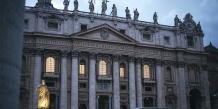
THE SHRINES WE’LL BE VISITING:
Rome: St. Peter's Basilica: The epicenter of the Catholic Church, housing the tomb of St. Peter.
Basilica of St. John Lateran: The oldest of the four major basilicas in Rome, known as the cathedral of the Pope.
Assisi: Basilica of St. Francis of Assisi: A UNESCO World Heritage site, it houses the tomb of St. Francis and features beautiful frescoes.
Loreto: Basilica della Santa Casa: Enshrines the Holy House believed to be the house of the Virgin Mary, miraculously transported from Nazareth.
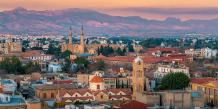
Cyprus was Paul’s first site on his missionary path. The island was ruled by the Ptolemies of Egypt until it was annexed by Rome in 58 BC. Many of its rock-cut tombs follow Egypt’s peristyle fashion. Mark Antony gave the island to Cleopatra as a wedding gift, but it was restored as a Roman province after the Battle of Actium (31 BC).
 FAITH & HERITAGE JOURNEYS
FAITH & HERITAGE JOURNEYS

